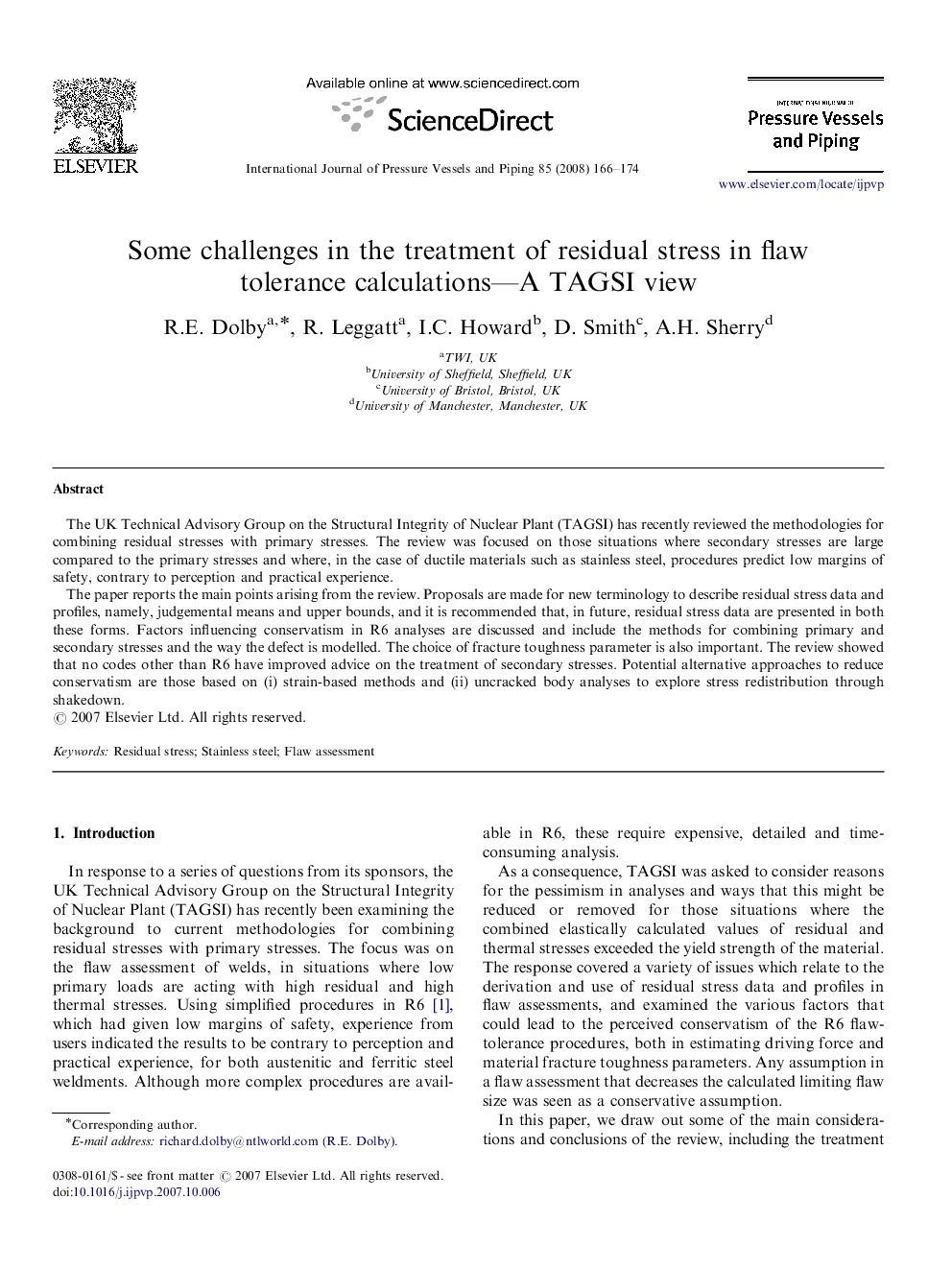| Article ID | Journal | Published Year | Pages | File Type |
|---|---|---|---|---|
| 788588 | International Journal of Pressure Vessels and Piping | 2008 | 9 Pages |
The UK Technical Advisory Group on the Structural Integrity of Nuclear Plant (TAGSI) has recently reviewed the methodologies for combining residual stresses with primary stresses. The review was focused on those situations where secondary stresses are large compared to the primary stresses and where, in the case of ductile materials such as stainless steel, procedures predict low margins of safety, contrary to perception and practical experience.The paper reports the main points arising from the review. Proposals are made for new terminology to describe residual stress data and profiles, namely, judgemental means and upper bounds, and it is recommended that, in future, residual stress data are presented in both these forms. Factors influencing conservatism in R6 analyses are discussed and include the methods for combining primary and secondary stresses and the way the defect is modelled. The choice of fracture toughness parameter is also important. The review showed that no codes other than R6 have improved advice on the treatment of secondary stresses. Potential alternative approaches to reduce conservatism are those based on (i) strain-based methods and (ii) uncracked body analyses to explore stress redistribution through shakedown.
